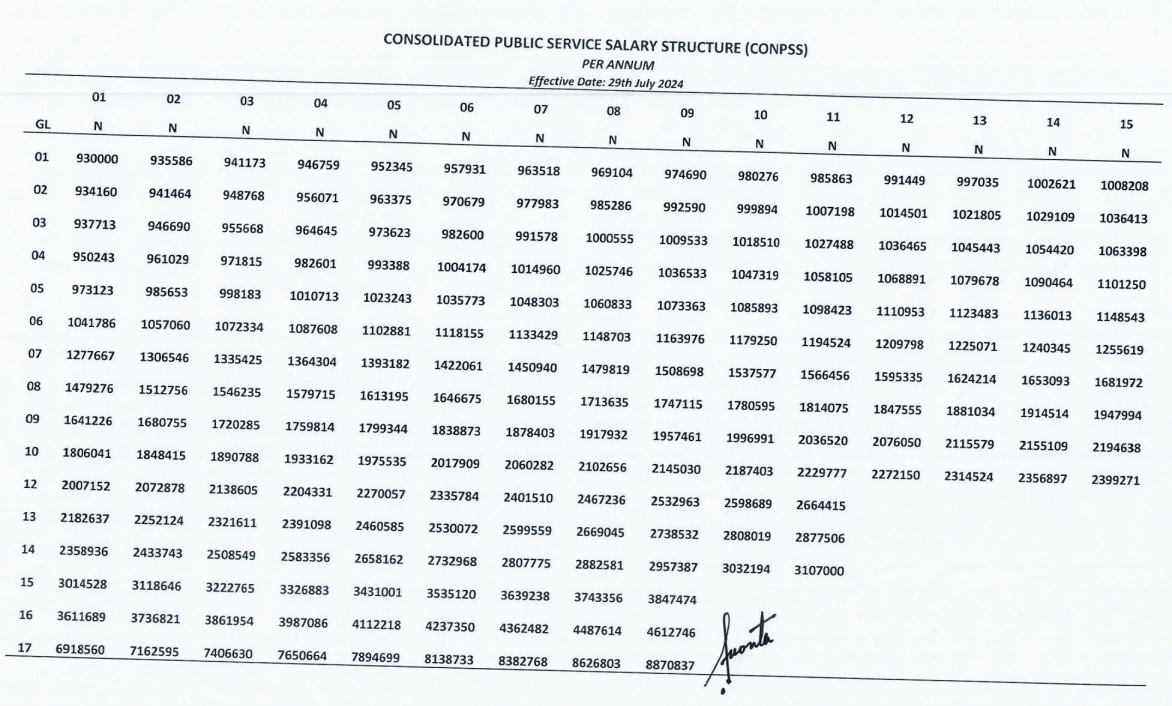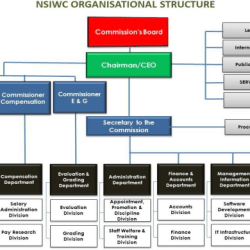The Nigerian public service salary system has a structured approach, organized into different consolidated salary structures tailored for specific sectors and roles. These frameworks ensure uniformity, fairness, and competitiveness in employee compensation across various public service areas. Here’s a detailed look at each of the key salary structures in Nigeria:
The Consolidated Public Service Salary Structure (CONPSS) is the standard pay structure for federal and state government employees working across ministries, departments, and agencies that don’t fall under specialized categories like health, education, or paramilitary.



The National Salaries, Incomes and Wages Commission (NSIWC), established by Decree No. 99 of 1993—now recognized as Cap N72 in the Laws of the Federation—was created to oversee and address various aspects of compensation within Nigeria’s Federal Public Service.
NSIWC’s core functions encompass handling remuneration-related matters, administering the National Minimum Wage, reviewing Federal Public Service pensions, conducting research into public service pay structures, and managing comparability surveys and salary administration regulations across the country.
Q1: What is the purpose of Nigeria’s consolidated salary structures?
Nigeria’s consolidated salary structures provide organized, sector-specific pay scales to ensure equitable, competitive, and standardized compensation for public servants.
Q2: Who falls under the CONMESS salary structure?
The CONMESS structure is specifically for medical doctors and practitioners in public health services.
Q3: What type of allowances are available under CONHESS?
CONHESS includes allowances like shift and hazard allowances, primarily for nurses, pharmacists, and lab scientists.
Q4: How does CONTISS II differ from CONUASS II?
CONTISS II is for non-academic staff in tertiary institutions, while CONUASS II is for academic staff in Nigerian universities.
Q5: Are allowances standardized across all salary structures?
No, allowances vary based on the structure and specific sector needs, such as hazard allowances in health sectors and research grants in academic fields.
Q6: How is the salary progression determined under these structures?
Salary progression typically follows a step-wise increase based on years of service, performance, and attainment of additional qualifications.







